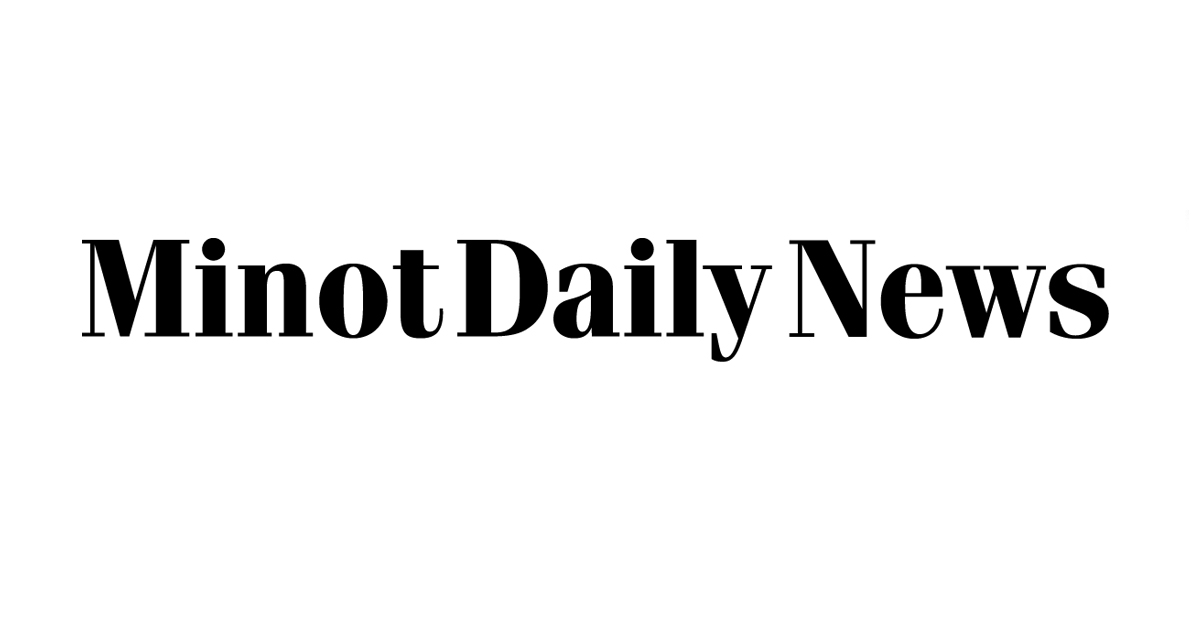Horse Racing
Will the European equities tape tender process end up as a one-horse race? – The TRADE

The European Securities Markets Authority (ESMA) opened up its industry consultation on 23 May inviting participants to comment on how they expect the equities consolidated tape to be delivered.
The watchdog is expected to publish its results in the fourth quarter of this year and the findings will heavily impact who will go on to bid as part of the tender process, which is expected in the second half of 2025. As anyone reading the consultation can see, there is still a plethora of creases that need to be ironed out across latency, the commercial model, and many of the technical standards.
Currently the market has one bidder to provide the consolidated tape: EuroCTP, the exchange-backed initiative. However, with a piece of financial infrastructure as essential as this coming to Europe for the first time, one would hope there would be an element of competition in the tender process. It’s hard to classify someone best in class when the class consists of one. As things currently stand, ESMA is going to have an awfully easy job on its hands selecting its champion.
With the consultation now open, perhaps its results will generate some welcome competition for EuroCTP.
One bidder to rule them all
Backed by 14 exchanges as its shareholders, EuroCTP was first announced in the third quarter of 2023. The start-up is now in the process of firming up its plans to make its official bid in 2025.
As a start-up, the firm will not use in-house technology. Chief executive of EuroCTP Eglantine Desautel tells The TRADE that EuroCTP has finalised the shortlisting process for its prospective technology partners and is working towards a final selection for August or September.
With the ESMA consultation results due in December, Desautel explains that the joint venture intends to take some bets ahead the results in order to give itself enough lead time to develop its bid: “We cannot afford to wait for everything to be set to start our delivery work.”
EuroCTP’s backing by European exchanges has been dubbed as both a strength and a potential weakness, however, further fanning calls for a competing bid to come to market. As the core venues for Europe and hosts to the reference price-generating lit continuous markets, it makes sense for exchanges to be heavily involved in the implementation of Europe’s first consolidated data source.
However, looking at the rhetoric around the consolidated tape debate that has plagued the Mifid II Review for the last few years, one can’t help but notice that it is those that were least in favour of a consolidated tape, in particular the much sought after inclusion of pre-trade data, that now make up the shareholders board of the most advanced bidder.
On the other hand, their role in EuroCTP could offer a welcome solution to said problem. Exchanges were concerned over the damaging impact a tape could have on revenues they make from data products. As shareholders of the tape provider, those concerns could be alleviated.
“EuroCTP is a standalone company,” Desautel confirms. “Like any company we have shareholders and shareholders are not involved in the day-to-day activities. The company was created by putting serious money into it to make it work so it’s definitely not a plan just to derail the CTP agenda.”
Contenders
Among those exploring a contending bid for the CTP is French consulting firm, Adamantia Group. Engaged by the buy- and sell-side in 2022 to explore the functional use cases of a consolidated tape, the firm is now exploring becoming an industry led candidate to rival EuroCTP.
“We have reached a new phase in the initiative to assess whether this group or an extended group of firms could possibly apply as a candidate to propose a real alternative to the only official bidder,” Antoine Pertriaux, strategy consulting and research in the financial industry at Adamantia Group tells The TRADE.
“How do you proceed with the selection process when you have only one candidate? We think it will be valuable for the industry to have multiple options in order to challenge each individual proposal and give a better possibility to select the best one.”
Adamantia Group is now assessing its potential to become a candidate and exploring potential technology providers that it could partner with in order to achieve this goal. Backed by over 10 buy- and sell-side institutions, Adamantia has been vocal in its desire for greater pre-trade data included in the tape.
“The idea is to keep it [our initiative] open to any firm who shares the same views and objectives for the CP. In terms of progress, we have added additional firms and there are many more who are also interested in participating,” says Pertriaux.

Natan Tiefenbrun
“All are providing direct support to our initiative. In terms of our current progress, we are finalising the more operational and technological aspects. We need to find the right partner to develop the infrastructure. We’ve had very good discussions which gives us confidence that we can put something together.”
However, their future bid is still unconfirmed.
Also exploring the potential for a joint venture bid is Cboe Europe. Cboe has been transparent with its stance over the last few months that it would consider placing a bid as part of a consortium. However, when asked when, with who, or what that might look like, president of North American and European equities, Natan Tiefenbrun, is holding his cards close to his chest.
“If we were to bid, we would probably have a preference to bid in partnership with others rather than alone – given the financial commitment and risks involved, and the potential benefits of having more expertise available,” he tells The TRADE.
Aquis and the London Stock Exchange Group (LSEG) declined to comment on their potential involvement in the CTP when contacted by The TRADE.
Still an awful long way to go
With ESMA’s consultation in mind, there is still an awful that must be clarified ahead of the tender process next year that will ultimately discourage or encourage further competing bids from across the industry.
Interestingly, among the topics put up for debate in last week’s consultation is ESMA’s proposed model on consortiums. The consultation questions whether or not competition is damaged if a firm that is able to provide the tape on its own is allowed to take part in a consortium.
EuroCTP’s model is a consortium model and should it come to fruition, Adamantia’s model would be similar. Cboe has also made it clear it wouldn’t come to the table outside of a joint venture. These rules and the outcome of the consultation will therefore be closely monitored.
“There is established EU guidance on bidding consortia and that is something we’d have to take into account,” adds Tiefenbrun.
So far legislation around the tape has been somewhat vague. The industry will have a single consolidated tape provider per asset class. It’ll include post-trade data and pre-trade to the extent of level one top of book unattributed data. There will be no mandatory consumption but there will be mandatory contributions, with an opt out scheme for smaller venues.
The revenue model has more structure than before but still needs fleshing out and this is still open to change following the consultation. For example, smaller venues under a certain level will get a six times multiplier on their traded value relative to the value of the consolidated tape. An additional three times multiplier is also added if the venue has had an IPO in the last three years in a bid to encourage more listings. Extra credit is also awarded to bigger venues for any recent IPOs.
However, outside of this, aspects around the tape’s latency, its commercial prospect and costs, its governance structure, its licensing model and its data provision model all need to be finalised in ESMA’s consultation. And, once finalised, these details will ultimately shape the list of contenders who intend to compete to provide it.

Eglantine Desautel
“Our understanding is that connectivity cost between the data contributors and the tape will be the responsibility of the data contributors,” explains Eglantine. “One question we would like to emphasise is what are the communication protocols or the qualitative elements of this communication to make sure that we get the data as fast as possible and in the proper format? “If this kind of thing is pushed into technical standards then it will avoid never-ending discussions.”
Latency will be a huge contributor to the cost of running a tape. Implementing a microsecond latency tape like in the US will be much more expensive than a cheaper tape using milliseconds. US exchanges are geographically not as far apart as some exchanges in Europe and the UK for example this is something that must be considered when designing a tape.
In Europe, the tape isn’t going to be baked into best execution in the same way that is in the US. Pair this with no mandatory consumption in Europe and it means that ultimately users will only buy the data if its attractively priced and deemed useful enough.
“For EuroCTP there is a clear understanding that the tape is not meant to be a high margin activity and it will be strictly organised around the reasonable commercial basis provisions,” explains Desautel. “It’s really important not to overshoot in terms of technology. We can do microseconds if this is what the community needs but there is no need to create an expensive infrastructure that nobody will need.”
The tape provider is also currently set to change every five years. This in itself is something to be considered for those that might look to throw their hat into the ring to host it. Providers must assess how commercially viable hosting the tape could be, weighing up the setup costs, the time to profit and running costs against potential revenues that could be made.
“A change of provider at the five-year mark seems somewhat unlikely but not impossible,” says Tiefenbrun. “You have to make a decision about generating a return in the first five years or having a longer-term horizon for making back your investment. There’s definitely a question that raises around the risk profile of operating the tape. Ultimately it comes down to how the service is priced and how many users there are for those services.”
Data vendors and the golden source
An element that will be interesting to watch play out once the consolidated tape is – finally – established, will be the role of data vendors. While they may not make bids to host the tape themselves, the role they play in supporting a tape will be central to its success.
Many participants have begun to ask questions around how symbols might change on terminals for example or how historical data for a certain instrument will be shown. Will the European consolidated tape price of an instrument be the default one that is shown for example? All of these details will hugely impact how widely adopted a consolidated data source is.

Antoine Pertriaux
“The data service providers will play a critical role for the success of the tape because consolidating the data into the CTP is one thing but the key question is how the users are going to consume the data,” added Pertriaux.
“Clearly the expectation from the user is that those players will be able to intermediate the CTP data and make it available through the existing channels. This means no specific investment or adaptation of systems on a user side. Just click on the new product through the terminal and have access to the EBBO or to the tape data. It will be crucial that the CTP make sure that those players are ready from the start to display the data.”
FactSet declined to comment when approached by The TRADE. Bloomberg did not respond to a request for comment.
There’s still much that needs to be clarified before a meaningful competitor to EuroCTP can emerge, but it’s all still to play for. There’s a handful of potential contenders but as it stands, we could have a winner by default. Stay tuned with The TRADE for more updates.










